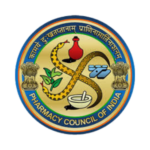In recent years, the pharmaceutical industry has witnessed a revolutionary shift towards biopharmaceuticals, marking a significant advancement in pharmaceutical drug development. Biopharmaceuticals, derived from biological sources, are setting new standards in the treatment of various diseases, including cancer, diabetes, and autoimmune disorders. This blog explores the exciting world of biopharmaceuticals, highlighting their impact on pharmaceutical drug development and the promising future they hold.
What Are Biopharmaceutical Development?

Biopharmaceutical development, also known as biologics, are therapeutic products produced using living organisms. Unlike traditional small-molecule drugs, biopharmaceuticals include a wide range of products such as proteins, antibodies, and vaccines. These products are designed to mimic or influence biological processes, offering targeted and effective treatments. The complexity and specificity of biopharmaceuticals make them a groundbreaking component of pharmaceutical drug development.
Types of Biopharmaceuticals

Biopharmaceuticals encompass various types of products, each with unique characteristics and therapeutic applications:
- Monoclonal Antibodies: These are antibodies engineered to target specific antigens, such as those found on cancer cells. They are used in the treatment of various cancers and autoimmune diseases.
- Recombinant Proteins: These proteins are produced through recombinant DNA technology and are used to replace or supplement proteins in patients with deficiencies.
- Vaccines: Biopharmaceutical vaccines are developed using biological processes to provide immunity against infectious diseases.
- Gene Therapy: This involves modifying or manipulating the expression of a gene to treat or prevent diseases.
- Cell Therapy: Involves the transplantation of living cells into a patient to treat or cure diseases, such as certain types of cancers and genetic disorders.
The Role of Biopharmaceutical development

Biopharmaceutical development is a complex and intricate process that involves several stages, from discovery and preclinical testing to clinical trials and regulatory approval. The development of biopharmaceuticals requires a deep understanding of molecular biology, genetics, and biotechnology. This process is more intricate than traditional pharmaceutical drug development due to the biological nature of the products and the sophisticated technologies involved.
Stages of Biopharmaceutical development
- Discovery and Research: This initial stage involves identifying potential biological targets and developing molecules that can interact with these targets.
- Preclinical Testing: Involves laboratory and animal studies to assess the safety and efficacy of the biopharmaceutical candidate.
- Clinical Trials: Conducted in three phases, these trials involve testing the biopharmaceutical in humans to evaluate its safety, efficacy, and dosage.
- Regulatory Approval: After successful clinical trials, the biopharmaceutical must be reviewed and approved by regulatory bodies such as the FDA or EMA before it can be marketed.
- Manufacturing and Distribution: Once approved, the biopharmaceutical is manufactured and distributed to healthcare providers and patients.
Advantages of Biopharmaceuticals
The rise of biopharmaceuticals in pharmaceutical drug development is attributed to their numerous advantages:
- Targeted Therapy: Biopharmaceuticals can specifically target disease pathways, reducing side effects and increasing efficacy.
- Innovation: They offer new treatment options for diseases that were previously difficult to manage with conventional drugs.
- Personalized Medicine: Biopharmaceuticals enable the development of personalized treatment plans based on individual patient profiles.
- Reduced Drug Resistance: Biopharmaceuticals can provide solutions to drug-resistant diseases, such as certain cancers and bacterial infections.
These advantages have positioned biopharmaceuticals at the forefront of pharmaceutical drug development, making them essential tools in modern medicine.
Challenges in Biopharmaceutical development
Despite the promising potential, biopharmaceutical development faces several challenges:
Complex Manufacturing
The production of biopharmaceuticals involves complex processes that require precise control and monitoring. Unlike traditional drugs, which are typically synthesized through chemical processes, biopharmaceuticals are produced using living cells, which can be highly variable and sensitive to environmental conditions. This complexity necessitates rigorous quality control measures and advanced biotechnological techniques.
High Costs
The development and manufacturing processes for biopharmaceuticals are expensive, contributing to the high cost of biopharmaceutical products. The need for specialized equipment, skilled personnel, and stringent regulatory compliance adds to the overall cost. These expenses are often passed on to patients and healthcare systems, making biopharmaceuticals less accessible to some populations.
Regulatory Hurdles
Biopharmaceuticals must meet stringent regulatory requirements, which can delay their approval and market entry. Regulatory bodies demand extensive data on safety, efficacy, and manufacturing processes, which can prolong the development timeline. Navigating these regulatory landscapes requires significant resources and expertise.
Overcoming these challenges is crucial for the continued success and integration of biopharmaceuticals in pharmaceutical drug development.
The Impact on Pharmaceutical Drug Development
The advent of biopharmaceuticals has significantly influenced pharmaceutical drug development. Traditional drug development focuses on chemical synthesis and small molecules, whereas biopharmaceutical development emphasizes biological processes and large molecules. This shift has led to the creation of more effective and safer therapies.
Novel Therapeutic Approaches
Biopharmaceuticals have paved the way for novel therapeutic approaches, such as gene therapy and cell therapy. These cutting-edge treatments are transforming the landscape of pharmaceutical drug development, offering hope for curing genetic disorders and other complex diseases.
Gene Therapy: Involves the introduction, removal, or alteration of genetic material within a patient’s cells to treat or prevent disease. This approach has shown promise in treating genetic disorders, cancers, and viral infections.
Cell Therapy: Uses cellular material, often stem cells, to treat or cure diseases. This technique has been successful in treating certain cancers, blood disorders, and degenerative diseases.
Personalized Medicine
Biopharmaceuticals are driving the shift towards personalized medicine, where treatments are tailored to individual patients based on their genetic makeup, lifestyle, and environmental factors. This personalized approach can enhance treatment efficacy and reduce adverse effects, leading to better patient outcomes.
Future Prospects
The future of biopharmaceutical development looks incredibly promising. Advances in biotechnology, genomics, and proteomics are expected to drive innovation and improve the efficiency of developing new biopharmaceuticals. Personalized medicine, which tailors treatments to individual patients based on their genetic makeup, is likely to become more prevalent, thanks to biopharmaceuticals.
Integration of Artificial Intelligence and Machine Learning
The integration of artificial intelligence (AI) and machine learning (ML) in pharmaceutical drug development will accelerate the discovery and development of new biopharmaceuticals. These technologies can analyze vast amounts of data, predict outcomes, and optimize processes, making biopharmaceutical development more efficient and cost-effective.
AI in Drug Discovery: AI algorithms can identify potential drug candidates by analyzing biological data and predicting their interactions with disease targets.
ML in Clinical Trials: ML models can optimize clinical trial design, predict patient responses, and identify biomarkers for patient stratification.
Advanced Manufacturing Techniques
Advances in manufacturing techniques, such as continuous bioprocessing and 3D bioprinting, will enhance the production of biopharmaceuticals. These techniques can improve scalability, reduce costs, and ensure consistent product quality.
Continuous Bioprocessing: Allows for the continuous production of biopharmaceuticals, reducing production time and increasing efficiency.
3D Bioprinting: Enables the fabrication of complex biological structures, such as tissues and organs, which can be used in drug testing and regenerative medicine.
Expanding Therapeutic Applications
As research continues to uncover the underlying mechanisms of diseases, the range of therapeutic applications for biopharmaceuticals will expand. New treatments for neurological disorders, cardiovascular diseases, and rare genetic conditions are on the horizon.
Neurological Disorders: Biopharmaceutical development targeting specific neural pathways can offer new treatments for conditions like Alzheimer’s disease, Parkinson’s disease, and multiple sclerosis.
Cardiovascular Diseases: Novel biologics can address underlying causes of cardiovascular conditions, such as inflammation and cholesterol regulation.
Rare Genetic Conditions: Gene and cell therapies hold the potential to cure rare genetic disorders by addressing their root causes.
Conclusion
Biopharmaceuticals represent the next frontier in pharmaceutical drug development, offering groundbreaking treatments for various diseases. The complexity and specificity of biopharmaceuticals have revolutionized the industry, providing targeted and effective therapies. Despite the challenges in biopharmaceutical development, the future holds immense potential, driven by technological advancements and a deeper understanding of biological processes.
As the landscape of pharmaceutical drug development continues to evolve, biopharmaceuticals will play a pivotal role in shaping the future of medicine, bringing us closer to more personalized, effective, and safer treatments. Embracing this new era of biopharmaceuticals development will undoubtedly lead to significant advancements in healthcare and improved patient outcomes.
The ongoing collaboration between researchers, clinicians, regulatory bodies, and industry stakeholders will be essential to overcoming the challenges and maximizing the benefits of biopharmaceuticals. As we continue to push the boundaries of scientific knowledge and technological innovation, biopharmaceuticals will remain at the forefront of the quest for better health and well-being for all.







